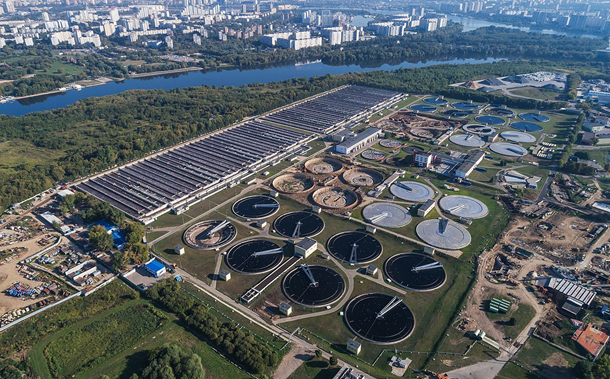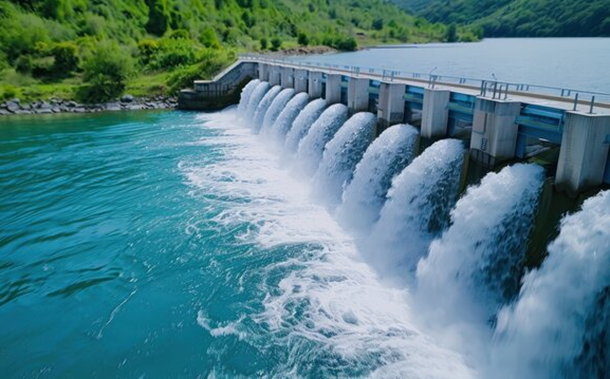Flood Hazard Assessment Due to Changes in Land Use and Cover
Downloads
Doi:10.28991/CEJ-2024-010-12-04
Full Text:PDF
Downloads
[2] Budiyono, Y., Aerts, J. C. J. H., Tollenaar, D., & Ward, P. J. (2016). River flood risk in Jakarta under scenarios of future change. Natural Hazards and Earth System Sciences, 16(3), 757–774. doi:10.5194/nhess-16-757-2016.
[3] Mishra, B. K., Rafiei Emam, A., Masago, Y., Kumar, P., Regmi, R. K., & Fukushi, K. (2018). Assessment of future flood inundations under climate and land use change scenarios in the Ciliwung River Basin, Jakarta. Journal of Flood Risk Management, 11, S1105–S1115. doi:10.1111/jfr3.12311.
[4] Akter, T., Quevauviller, P., Eisenreich, S. J., & Vaes, G. (2018). Impacts of climate and land use changes on flood risk management for the Schijn River, Belgium. Environmental Science and Policy, 89(July), 163–175. doi:10.1016/j.envsci.2018.07.002.
[5] Rahman, M., Ningsheng, C., Mahmud, G. I., Islam, M. M., Pourghasemi, H. R., Ahmad, H., Habumugisha, J. M., Washakh, R. M. A., Alam, M., Liu, E., Han, Z., Ni, H., Shufeng, T., & Dewan, A. (2021). Flooding and its relationship with land cover change, population growth, and road density. Geoscience Frontiers, 12(6), 101224. doi:10.1016/j.gsf.2021.101224.
[6] Kuntoro, A. A., Cahyono, M., & Soentoro, E. A. (2018). Land cover and climate change impact on river discharge: Case study of upper citarum river basin. Journal of Engineering and Technological Sciences, 50(3), 364–381. doi:10.5614/j.eng.technol.sci.2018.50.3.4.
[7] Kuntoro, A. A., Putro, A. W., Kusuma, M. S. B., & Natasaputra, S. (2017). The effect of land use change to maximum and minimum discharge in Cikapundung River Basin. AIP Conference Proceedings, 1903(November 2017). doi:10.1063/1.5011621.
[8] Sugianto, S., Deli, A., Miswar, E., Rusdi, M., & Irham, M. (2022). The Effect of Land Use and Land Cover Changes on Flood Occurrence in Teunom Watershed, Aceh Jaya. Land, 11(8). doi:10.3390/land11081271.
[9] Banjara, M., Bhusal, A., Ghimire, A. B., & Kalra, A. (2024). Impact of Land Use and Land Cover Change on Hydrological Processes in Urban Watersheds: Analysis and Forecasting for Flood Risk Management. Geosciences (Switzerland), 14(2), 40. doi:10.3390/geosciences14020040.
[10] Hosseinzadehtalaei, P., Ishadi, N. K., Tabari, H., & Willems, P. (2021). Climate change impact assessment on pluvial flooding using a distribution-based bias correction of regional climate model simulations. Journal of Hydrology, 598(December), 126239. doi:10.1016/j.jhydrol.2021.126239.
[11] Allegri, E., Zanetti, M., Torresan, S., & Critto, A. (2024). Pluvial flood risk assessment for 2021–2050 under climate change scenarios in the Metropolitan City of Venice. Science of the Total Environment, 914. doi:10.1016/j.scitotenv.2024.169925.
[12] Hamed Fahmy, A., Amin Abdelfatah, M., & El-Fiky, G. (2023). Investigating land use land cover changes and their effects on land surface temperature and urban heat islands in Sharqiyah Governorate, Egypt. Egyptian Journal of Remote Sensing and Space Science, 26(2), 293–306. doi:10.1016/j.ejrs.2023.04.001.
[13] Silva, J. S., Silva, R. M. da, & Santos, C. A. G. (2018). Spatiotemporal impact of land use/land cover changes on urban heat islands: A case study of Paço do Lumiar, Brazil. Building and Environment, 136(January), 279–292. doi:10.1016/j.buildenv.2018.03.041.
[14] Otto, F. E. L., Zachariah, M., Saeed, F., Siddiqi, A., Kamil, S., Mushtaq, H., Arulalan, T., AchutaRao, K., Chaithra, S. T., Barnes, C., Philip, S., Kew, S., Vautard, R., Koren, G., Pinto, I., Wolski, P., Vahlberg, M., Singh, R., Arrighi, J., ... Clarke, B. (2023). Climate change increased extreme monsoon rainfall, flooding highly vulnerable communities in Pakistan. Environmental Research: Climate, 2(2), 025001. doi:10.1088/2752-5295/acbfd5.
[15] Tollan, A. (2002). Land-use change and floods: What do we need most, research or management? Water Science and Technology 45(8), 183–190. doi:10.2166/wst.2002.0176.
[16] Varis, O., Taka, M., & Tortajada, C. (2022). Global human exposure to urban riverine floods and storms. River, 1(1), 80–90. doi:10.1002/rvr2.1.
[17] Adnan, M. S. G., Abdullah, A. Y. M., Dewan, A., & Hall, J. W. (2020). The effects of changing land use and flood hazard on poverty in coastal Bangladesh. Land Use Policy, 99(July), 104868. doi:10.1016/j.landusepol.2020.104868.
[18] Dewi, R. P., Khofianida, A., Agista, D. E., Arrasyid, F. P., Kurniawati, Damayanti, S. I., & Putri, R. F. (2020). Landuse change in Jakarta Province: Trend, types, and socio-demographic factors. IOP Conference Series: Earth and Environmental Science, 451(1). doi:10.1088/1755-1315/451/1/012055.
[19] Rachma, T. R. N., Silalahi, F. E. S., & Oktaviani, N. (2022). Monitoring 20 Years of Land Cover Change Dynamics in the Satellite Cities of Jakarta, Indonesia. IOP Conference Series: Earth and Environmental Science, 1111(1), 012034. doi:10.1088/1755-1315/1111/1/012034.
[20] Yosua, H., Kusuma, M. S. B., & Nugroho, J. (2023). An assessment of pluvial hazard in South Jakarta based on land-use/cover change from 2016 to 2022. Frontiers in Built Environment, 9, 1–8. doi:10.3389/fbuil.2023.1345894.
[21] Babí Almenar, J., Elliot, T., Rugani, B., Philippe, B., Navarrete Gutierrez, T., Sonnemann, G., & Geneletti, D. (2021). Nexus between nature-based solutions, ecosystem services and urban challenges. Land Use Policy, 100. doi:10.1016/j.landusepol.2020.104898.
[22] Priyambodoho, B. A., Kure, S., Yagi, R., & Januriyadi, N. F. (2021). Flood inundation simulations based on GSMAP satellite rainfall data in Jakarta, Indonesia. Progress in Earth and Planetary Science, 8(1). doi:10.1186/s40645-021-00425-8.
[23] Hamel, P., & Tan, L. (2022). Blue–Green Infrastructure for Flood and Water Quality Management in Southeast Asia: Evidence and Knowledge Gaps. Environmental Management, 69(4), 699–718. doi:10.1007/s00267-021-01467-w.
[24] Christiana, D. W. (2023). Building Resilience through Nature-based Solutions: Exploring the Urban-Rural Linkages in Flood Mitigation Strategies for Jayapura. Smart City, 3(2). doi:10.56940/sc.v3.i2.3.
[25] Taufik, S. R., Yatrib, M., Harman, A. N., Kesuma, T. N. A., Saputra, D., & Kusuma, M. S. B. (2022). Assessment of flood hazard reduction in DKI Jakarta: Bendungan Hilir Village. IOP Conference Series: Earth and Environmental Science, 989(1). doi:10.1088/1755-1315/989/1/012018.
[26] Supratman, M., Kusuma, M. S. B., Cahyono, M., & Kuntoro, A. A. (2024). Flood risk assessment of Kemang Area as a central business in South Jakarta. E3S Web of Conferences, 479. doi:10.1051/e3sconf/202447903003.
[27] Farid, M., Harumi Pusparani, H., Syahril Badri Kusuma, M., & Natasaputra, S. (2017). Study on effectiveness of flood control based on risk level: Case study of Kampung Melayu Village and Bukit Duri Village. MATEC Web of Conferences, 101. doi:10.1051/matecconf/201710105003.
[28] Alves Beloqui, A. (2020). Combining Green-Blue-Grey Infrastructure for Flood Mitigation and Enhancement of Co-Benefits. CRC Press, London, United Kingdom. doi:10.1201/9781003041818.
[29] Reu Junqueira, J., Serrao-Neumann, S., & White, I. (2022). Using green infrastructure as a social equity approach to reduce flood risks and address climate change impacts: A comparison of performance between cities and towns. Cities, 131, 104051. doi:10.1016/j.cities.2022.104051.
[30] Seo, M., Jaber, F., & Srinivasan, R. (2017). Evaluating various low-impact development scenarios for optimal design criteria development. Water (Switzerland), 9(4), 270. doi:10.3390/w9040270.
[31] Enung, Kusuma, M. S. B., Kardhana, H., Suryadi, Y., & Rohmat, F. I. W. (2022). Hourly Discharge Prediction Using Long Short-Term Memory Recurrent Neural Network (Lstm-Rnn) in the Upper Citarum River. International Journal of GEOMATE, 23(98), 147–154. doi:10.21660/2022.98.3462.
[32] Bennett, W. G., Karunarathna, H., Xuan, Y., Kusuma, M. S. B., Farid, M., Kuntoro, A. A., Rahayu, H. P., Kombaitan, B., Septiadi, D., Kesuma, T. N. A., Haigh, R., & Amaratunga, D. (2023). Modelling compound flooding: a case study from Jakarta, Indonesia. Natural Hazards, 118(1), 277–305. doi:10.1007/s11069-023-06001-1.
[33] Formánek, A., Silasari, R., Kusuma, M. S. B., & Kardhana, H. (2013). Two-dimensional model of ciliwung river flood in DKI Jakarta for development of the regional flood index map. Journal of Engineering and Technological Sciences, 45(3), 307–325. doi:10.5614/j.eng.technol.sci.2013.45.3.7.
[34] Pratiwi, V., Badri Kusuma, M. S., Kardhana, H., & Farid, M. (2020). Experimental Study of Dam Break Flow Generated By the Flap Gate in Horizontal Channel. International Journal of GEOMATE, 19(75), 19–26. doi:10.21660/2020.75.16098.
[35] Isma, F., Kusuma, M. S. B., Nugroho, E. O., & Adityawan, M. B. (2024). Flood hazard assessment in Kuala Langsa village, Langsa city, Aceh Province-Indonesia. Case Studies in Chemical and Environmental Engineering, 10, 100861. doi:10.1016/j.cscee.2024.100861.
[36] Yatsrib, M., Harman, A. N., Taufik, S. R., Kesuma, T. N. A., Saputra, D., Kusuma, M. S. B., Farid, M., & Kuntoro, A. A. (2021). Study on the Contribution of Normalization to Reducing Flood Risk in the Ciliwung River, Tebet District, Jakarta. IOP Conference Series: Earth and Environmental Science, 933(1), 012032. doi:10.1088/1755-1315/933/1/012032.
[37] Rizaldi, A., Badri Kusuma, M. S., Kuntoro, A. A., & Kardhana, H. (2022). Trend Analysis of Rainfall, Land Cover, and Flow Discharge in the Citarum Hulu–Majalaya Basin. International Journal on Advanced Science, Engineering and Information Technology, 12(4), 1469. doi:10.18517/ijaseit.12.4.15225.
[38] Kesuma, T. N. A., Kusuma, M. S. B., Farid, M., Kuntoro, A. A., & Rahayu, H. P. (2022). An Assessment of Flood Hazards Due To the Breach of the Manggarai Flood Gate. International Journal of GEOMATE, 23(95), 104–111. doi:10.21660/2022.95.3055.
[39] Juliana, I. C., Kusuma, M. S. B., Cahyono, M., Martokusumo, W., & Kuntoro, A. A. (2017). The effect of differences rainfall data duration and time period in the assessment of rainwater harvesting system performance for domestic water use. AIP Conference Proceedings, 1903. doi:10.1063/1.5011616.
[40] Suprapti, S., Kusuma, M. S. B., Kardhana, H., & Cahyono, M. (2024). An assessment of potential infiltration areas to support groundwater supply system in Jagakarsa, South Jakarta, based on Multi-Criteria Decision-Making (MCDM) analysis. Case Studies in Chemical and Environmental Engineering, 10, 100799. doi:10.1016/j.cscee.2024.100799.
[41] Kusuma, M. S. B., Setiawati, T., & Farid, M. (2019). Experimental model of dam break flow around several blockages configurations. International Journal of GEOMATE, 16(58), 26–32. doi:10.21660/2019.58.97684.
[42] Kardhana, H., Valerian, J. R., Rohmat, F. I. W., & Kusuma, M. S. B. (2022). Improving Jakarta's Katulampa Barrage Extreme Water Level Prediction Using Satellite-Based Long Short-Term Memory (LSTM) Neural Networks. Water (Switzerland), 14(9), 1469. doi:10.3390/w14091469.
[43] Kusuma, M. S. B., Ragayu, R. A., & Cahyono, M. (2009). Development study of turbulent κ-ε model for recirculation flow III: Two-dimension recirculation flow in a reservoir. ITB Journal of Engineering Science, 41(1), 1–16. doi:10.5614/itbj.eng.sci.2009.41.1.1.
[44] Sengara, W., Latief, H., Syahril, M., & Kusuma, B. (2008). Geotechnical Engineering for Disaster Mitigation and Rehabilitation. Geotechnical Engineering for Disaster Mitigation and Rehabilitation. Springer, Berlin, Germany. doi:10.1007/978-3-540-79846-0.
[45] Abdessamed, D., & Abderrazak, B. (2019). Coupling HEC-RAS and HEC-HMS in rainfall–runoff modeling and evaluating floodplain inundation maps in arid environments: case study of Ain Sefra city, Ksour Mountain. SW of Algeria. Environmental Earth Sciences, 78(19). doi:10.1007/s12665-019-8604-6.
[46] Thakur, B., Parajuli, R., Kalra, A., Ahmad, S., & Gupta, R. (2017). Coupling HEC-RAS and HEC-HMS in Precipitation Runoff Modelling and Evaluating Flood Plain Inundation Map. World Environmental and Water Resources Congress 2017, 240–251. doi:10.1061/9780784480625.022.
[47] Peker, Ä°. B., Gülbaz, S., Demir, V., Orhan, O., & Beden, N. (2024). Integration of HEC-RAS and HEC-HMS with GIS in Flood Modeling and Flood Hazard Mapping. Sustainability (Switzerland), 16(3), 1226. doi:10.3390/su16031226.
[48] Sisodia, P. S., Tiwari, V., & Kumar, A. (2014). Analysis of Supervised Maximum Likelihood Classification for remote sensing image. International Conference on Recent Advances and Innovations in Engineering (ICRAIE-2014), Jaipur, India. doi:10.1109/icraie.2014.6909319.
[49] Arifin, S. (2015). Study of Standard Components and Criteria for Digital Processing of Multispectral Remote Sensing Data for Land Cover Classification. Prosiding Pertemuan Ilmiah Tahunan XX dan Kongres VI Masyarakat Ahli Penginderaan Jauh Indonesia (MAPIN), 5-6 February, 2015, Darmaga Bogor, Indonesia.
[50] Saputra, N. E., Wibowo, C., & Lisnawati, Y. (2021). Analysis of soil physical properties and infiltration rates for various landuses at Gunung Dahu Research Forest, Bogor District, West Java Province. IOP Conference Series: Earth and Environmental Science, 713(1), 012034. doi:10.1088/1755-1315/713/1/012034.
[51] Ari Gunawan, T., Syahril Badri Kusuma, M., Cahyono, M., & Nugroho, J. (2017). The application of backpropagation neural network method to estimate the sediment loads. MATEC Web of Conferences, 101. doi:10.1051/matecconf/201710105016.
- Authors retain all copyrights. It is noticeable that authors will not be forced to sign any copyright transfer agreements.
- This work (including HTML and PDF Files) is licensed under a Creative Commons Attribution 4.0 International License.![]()














